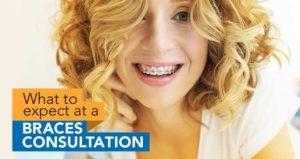Facts About Legacy Orthodontics Revealed
Facts About Legacy Orthodontics Revealed
Blog Article
The Definitive Guide for Legacy Orthodontics
Table of ContentsSome Known Factual Statements About Legacy Orthodontics All About Legacy OrthodonticsLegacy Orthodontics for DummiesLegacy Orthodontics Fundamentals ExplainedHow Legacy Orthodontics can Save You Time, Stress, and Money.
In enhancement, we supply flexible treatment schedules, versatile settlement options and a fun, pleasurable experience.An orthodontist is a dental expert trained to identify, avoid, and treat teeth and jaw abnormalities. They remedy existing conditions and are educated to recognize troubles that might develop in the future. Orthodontists deal with individuals of every ages, from kids to adults. People often associate an excellent smile with healthiness.
Malocclusion, or misaligned teeth, can bring about dental problems, consisting of dental caries, gum illness, and challenging or agonizing chewing. But not every person is born with straight teeth. If you have a negative bite or large areas between your teeth, you might wish to consult a dental professional focusing on orthodontic care.
Legacy Orthodontics - An Overview
( Image Credit History: DigitalVision/Getty Images) Orthodontists utilize fixed and removable dental tools, like dental braces, retainers, and bands, to change the placement of teeth in your mouth. Orthodontic treatment is for oral irregularities, consisting of: Misaligned teethBite problems, like an overbite or an underbiteCrowded teeth or teeth that are also much apartJaw misalignmentThe goal of orthodontic therapy is to enhance your bite.
A healthy and balanced bite ensures you can eat, eat, and talk correctly. While you could think of orthodontists as generally for youngsters or young adults that need dental braces, they can remedy oral problems at any kind of age. Orthodontists attend college, oral institution, and orthodontic institution. After college graduation, they spend 2 or 3 years in an orthodontic residency program.
All orthodontists are dentists, however not all dentists are orthodontists. Orthodontic residency programs use intensive, concentrated guideline for dental experts. They concentrate on two areas: Just how to correctly and safely relocate teeth Exactly how to correctly assist advancement in the teeth, jaw, and faceOnce an orthodontist has actually finished training, they have the alternative to become board licensed.
More About Legacy Orthodontics
Misalignment, or malocclusion, is one of the most typical factor individuals see an orthodontist. It is genetic and is the result of size distinctions between the top and reduced jaw or between the jaw and teeth. Malocclusion leads to tooth overcrowding, a twisted jaw, or irregular bite patterns. Malocclusion is generally treated with: Your orthodontist connects steel, ceramic, or plastic square bonds to your teeth.
Some people require a headgear to assist move teeth right into line with stress from outside the mouth. A retainer is a custom-made tool that keeps your teeth in place.
They can develop additional room in the mouth without having to draw teeth. Orthodontists utilize cables, medical screws, or plates to support your jaw bone.
You might require to see an orthodontist if you have: Crowding or otherwise enough room for every one of your teethOverbite, when your top teeth come over your bottom teethUnderbite, when your bottom teeth are too far forwardSpacing or concerns with gapsCrossbite, which is when your top teeth fit behind your base teeth when your mouth is closedOpen bite or a vertical gap between your front base and top teethMisplaced midline, when the center of your base and upper teeth don't line up Remedying a dental malocclusion can: Make attacking, eating, and speaking easierImprove the symmetry of our face and your i loved this overall appearanceEase discomfort from temporomandibular joint problemsDifferent your teeth and make them much easier to cleanse, assisting protect against dental caries or tooth cavities It's frequently a dental professional that initially notices misaligned teeth throughout a routine examination.
Some Known Details About Legacy Orthodontics

Throughout your initial orthodontic examination, you'll likely have: An oral examPhotos taken of your face and smileDental X-raysPanoramic (360 level) X-rays of your face and headImpressions to create mold and mildews of your teethThese examinations will aid your orthodontist recognize how to continue with your treatment. leesburg clear braces. An orthodontist is a dentist that's had training to treat your teeth and jaw
An orthodontist is focused on your bite, so something like a damaged tooth would certainly be dealt with by a dental expert. Orthodontists are concentrated on your bite, or the means your teeth fit with each other, and the straightness of your teeth.
Ever before wondered exactly how celebs always seem to have completely lined up teeth? Orthodontists are oral specialists who concentrate on fixing abnormalities in the teeth and jaws.
The Basic Principles Of Legacy Orthodontics

, orthodontists have a varied toolkit at their disposal. These reliable dental braces make use of a system of braces bound to the teeth and connected by cords.
Clear aligners, like Invisalign, are a popular option for individuals seeking an extra discreet therapy alternative. These detachable trays are custom-made to considerably shift the teeth's position. Headwear might be used in conjunction with braces or aligners to use extra targeted pressures, particularly for remedying jaw discrepancies. In situations of narrow jaws, palatal expanders can be used to produce space for appropriate tooth alignment.
Report this page